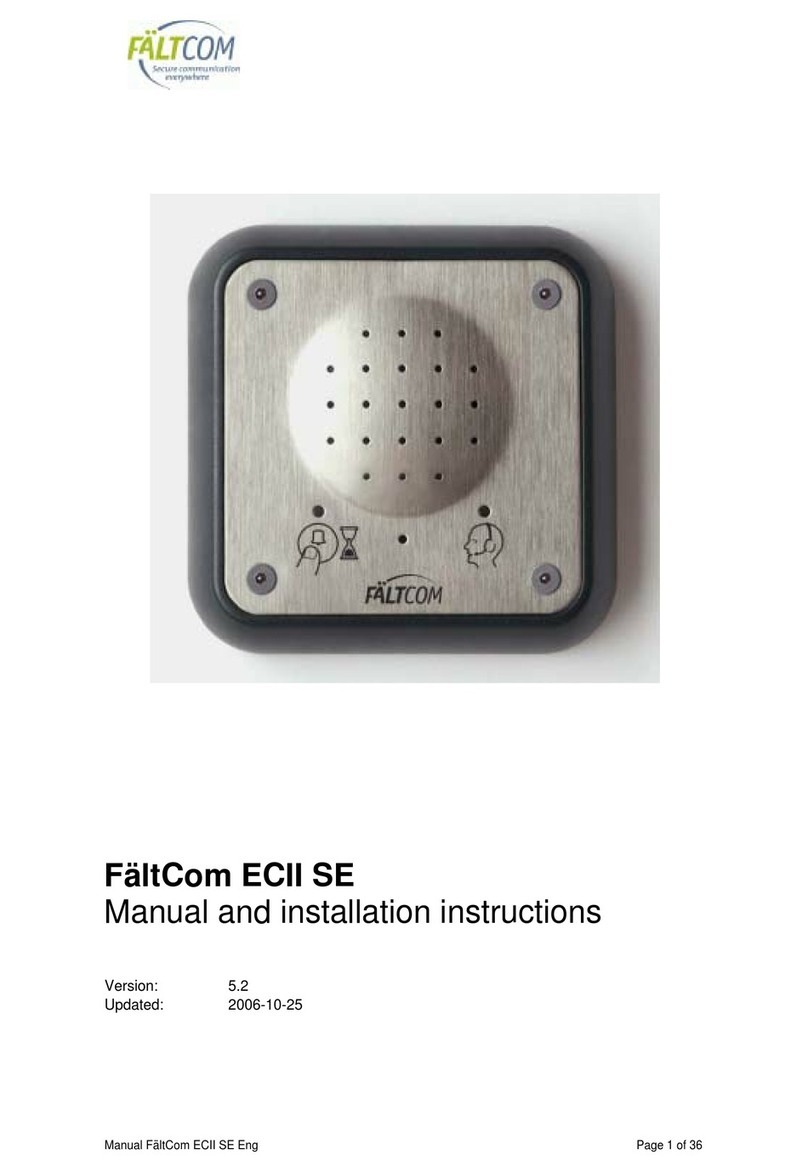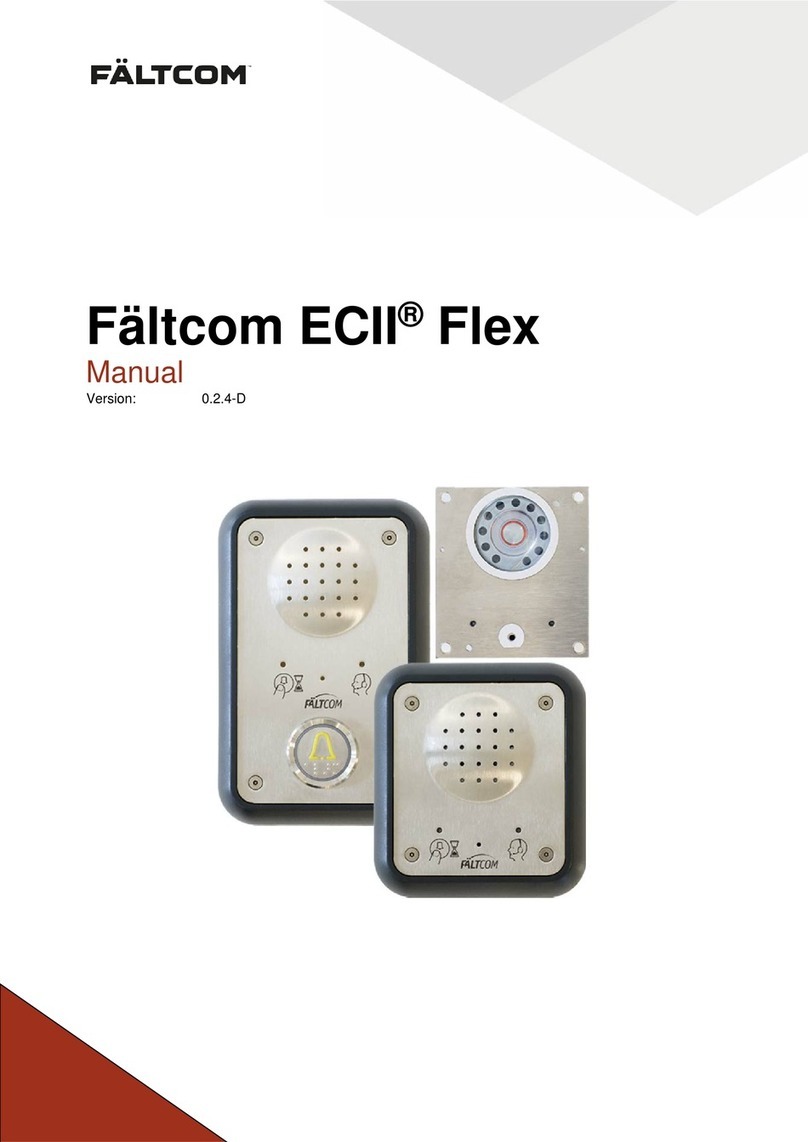Alarm input setting.................................................................................................. 17
Test of alarm reception........................................................................................... 19
Change of time delay for alarm button................................................................... 20
Connections to telephone line with automatic dial/ connection. ............................ 20
Automatic test alarm/routine call............................................................................ 20
Incoming calls......................................................................................................... 22
6.12.1 Multiple units on the line................................................................................ 22
6.12.2 Single unit on the line .................................................................................... 23
6.12.3 Active alarm mode......................................................................................... 23
Answering time for incoming calls.......................................................................... 24
Technical & Battery alarm receiver........................................................................ 24
6.14.1 Battery alarm from Power Supply (art. 132001)............................................ 24
6.14.2 Battery alarm from a GSM Gateway (art. 202236)........................................ 25
Simplified acknowledgement – 320........................................................................ 25
Disconnection of acknowledgement – 321 ............................................................ 25
Acknowledge on end – 323.................................................................................... 26
Detection of busy alarm receiver............................................................................ 26
LED flashing sequence .......................................................................................... 27
Programmable alarm types.................................................................................... 27
Info Alarm – logging of alarms ............................................................................... 28
End-of-alarm........................................................................................................... 29
6.22.1 End-of-alarm receiver.................................................................................... 30
Alarm protocol ........................................................................................................ 30
Dial tone detection.................................................................................................. 31
Speech messages.................................................................................................. 31
7ALARM RECEPTION..................................................................................................... 33
Alarm call................................................................................................................ 33
Acknowledging an alarm........................................................................................ 33
Ending a call........................................................................................................... 33
Repeat Message 2................................................................................................. 34
Forwarding a call.................................................................................................... 34
Termination of active alarm mode.......................................................................... 34
Speech switching ................................................................................................... 34
Calls to a lift phone................................................................................................. 34
7.8.1 Multiple units on the line .................................................................................... 34
7.8.2 Single unit on the line......................................................................................... 34
Volume control ....................................................................................................... 35
7.9.1 Remote volume control...................................................................................... 35
8PRODUCT LABEL ......................................................................................................... 36
9WARRANTY ................................................................................................................... 36
10 UPDATES....................................................................................................................... 37
11 REPAIR RETURN PROCEDURE .................................................................................. 37
Service form........................................................................................................... 38
12 TECHNICAL DATA........................................................................................................ 39
13 CONTACT INFORMATION............................................................................................ 40
162187 Manual FältCom ECII™ Flex Page 4 of 40





























